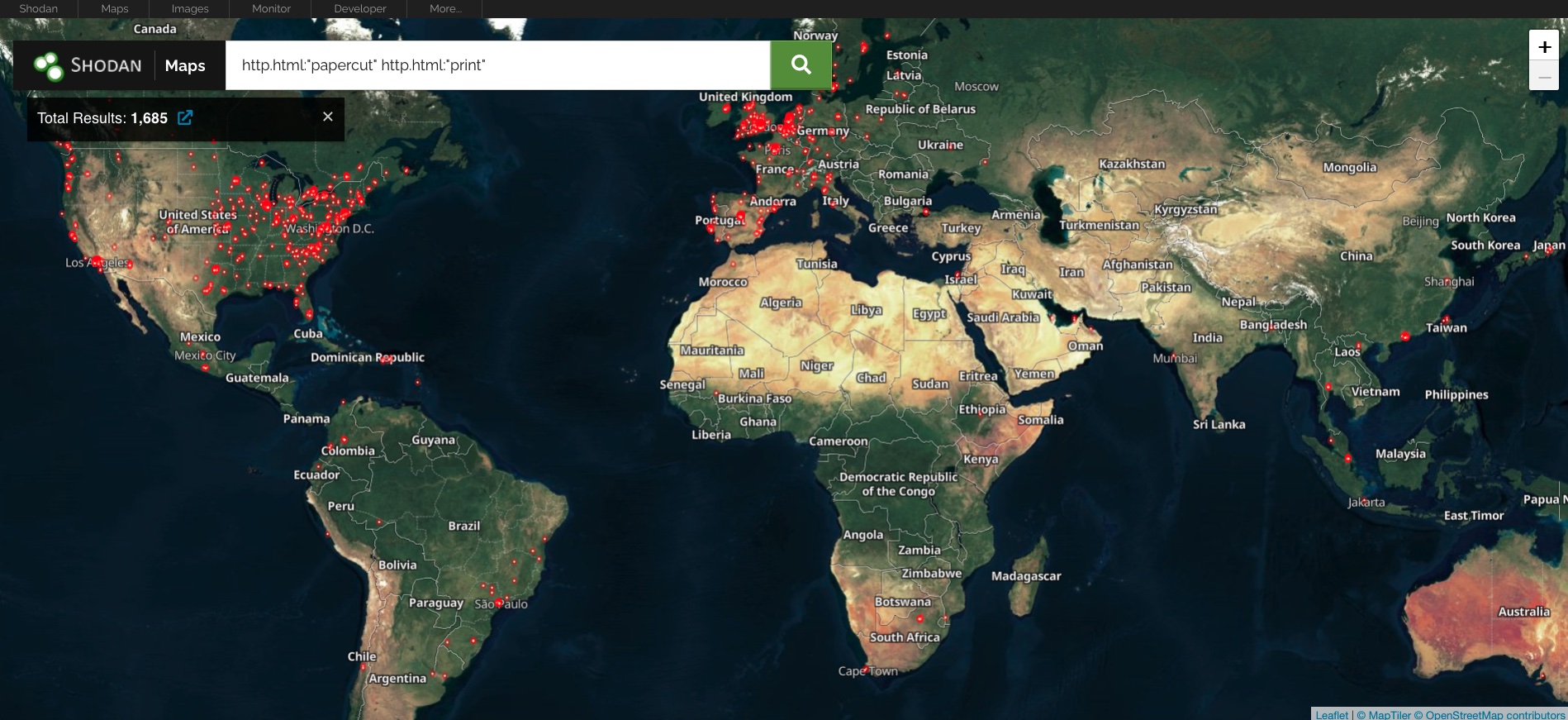

It was June 1973. For the past three months, Vint Cerf and Bob Kahn had been working together on a problem Kahn had been pondering for some time: how to connect ground-based military computers seamlessly to communications satellites and mobile radios.
The ARPANET and the way it handled communications was already well established. But extending it to handle multiple networks—whose reliability couldn’t be taken for granted—was a different story.
The two had been exchanging ideas in person and via email and reviewing the work of others who were trying to solve similar issues. But now, Cerf sat alone in the lobby of San Francisco’s Jack Tar Hotel, on a break from a computing conference. And the problem was on his mind.
Cerf pulled out an envelope. Recalling what the two had figured out so far, he began to sketch the main components and key interfaces. He scrawled clouds representing three different packet-switched networks—the ARPANET, packet radio, and packet satellite—and boxes representing the computers hanging off those networks. These would be the host computers, running applications that needed to use the network.

“The networks couldn’t be changed and couldn’t know that they were part of the Internet, because they already existed,” Cerf recalls recently in an interview at his office at Google, in Reston, Va.
So he sketched in another set of computers—gateways—that would know about other networks.
“Those were the constraints of the problem,” he says. “Sometimes, if you can constrain a problem enough, you can see the solution pop out in front of you. The diagram helped me to see where protocols would need to be standardized.”
Cerf describes the communication protocols that he and Kahn came up with as comparable to a set of postcards and envelopes: The postcard has a message and an address for the intended destination. The address on the envelope is either that of the destination host in the local network or of a gateway that leads toward the next network along the route to the final destination.
When a message arrives at that next gateway, the gateway opens the envelope and checks the address on the postcard. If the message is intended for a destination inside the gateway’s home network, it gets delivered in an appropriate envelope; if not, it goes in an envelope addressed to the next gateway en route to the destination network, where the process repeats.
That, essentially, is how the Internet works today.
For the past five decades, Cerf, now 79, has been perfecting, extending, and evangelizing the Internet. It is for this—his contributions in cocreating the Internet architecture and his leadership in its growth to date—that Cerf is the recipient of the 2023 IEEE Medal of Honor.
It started with SAGE
Cerf came to computers early; his first encounter was in 1958. When he was 15, a family friend working at System Development Corp. in Santa Monica, Calif., arranged a visit to a Semi-Automatic Ground Environment computer center. The SAGE system analyzed radar data, looking for Soviet bombers heading toward the United States.
“You literally walked inside the computer, a room with glowing red tubes on the walls,” Cerf recalls. “It was weird, but I was mesmerized.”
During high school in Van Nuys, Calif., his best friend, Steve Crocker, wrangled permission for the two to occasionally use a Bendix G-15 computer at the University of California, Los Angeles.
“That’s when I realized that you could create your own artificial world with software, and it would do what you told it to do,” Cerf says. “And there was something utterly beguiling about this idea.”
The two found it hard to stay away from UCLA’s G-15. One Saturday, Crocker recalls, the two were working on some mathematical equations they wanted the computer to solve. They went over to Engineering Building 1, where the computer was housed, and found the building locked.
“I was crestfallen,” Crocker says. “Then Vint observed that a second-floor window was open. I’m thinking, ‘Nooo…,’ but he was already on my shoulders climbing in. He went through and opened the door, and then we taped over the door latch so we could go in and out during the day.”
Cerf was just 17 when he first got paid for developing code in 1961—testing software for the Rocketdyne F-1 engine destined for NASA’s Apollo program. But when he entered Stanford University later that year, he envisioned a career in mathematics, not computer science. Then he encountered Riemannian geometry, a mathematical way of describing multidimensional surfaces.
“I broke my pick on that, realizing that I was probably not going to be a professional mathematician,” Cerf recalls. “I was relieved that I could program so at least there was a job I could do.” He took all the computer classes he could fit into his schedule.
After graduating in 1965 with a B.S. in mathematics, Cerf joined IBM as a systems engineer and was soon assigned to work with the Quiktran time-sharing system, which ran on a disappointingly old IBM 7044. After two years of tangling with Quiktran, Cerf realized there were fundamental things about computing he didn’t know, so he went back to school at UCLA.
“There are few people in the industry who have the combination of technical understanding, integrity, openness to new ideas, and kindness.”
There, he joined Crocker in a research group run by Len Kleinrock, with Gerald Estrin as their thesis advisor. Mainly, the group aimed to build a way to model the performance of the ARPANET and its gateways under different traffic conditions. But Cerf, Crocker, and a few others also thought about the computers that would attach to the network, considering what they would do and how they would do it.
It wasn’t easy, Cerf recalls. The computers had different operating systems; some even represented the characters of the alphabet differently.
Working with their counterparts at other ARPANET sites, Crocker, Cerf, and others in Kleinrock’s group eventually figured it out. And then they set about breaking the network by overloading it with artificial traffic. That mission came from Bob Kahn, then at Bolt Beranek and Newman (BBN), the company contracted by the U.S. Advanced Research Projects Agency (ARPA) to build the switches for the nascent network. [For more on Kahn's ARPANET efforts, see "The Do-or-Die Moments That Determined the Fate of the Internet."]
“We shot the ARPANET down repeatedly,” Cerf says. “I was tempted to get a rubber stamp with a kind of network pattern on it to stamp the side of the computer, the way guys that shoot down airplanes stamp the sides of their planes.”
An idea called “internetting”
Cerf finished his Ph.D. in 1972, and in October he returned to Stanford as an assistant professor of computer science and electrical engineering, after turning down the job a few times. (Not because he didn’t like Stanford, he says, but because he knew how smart the students were and didn’t think he had anything to teach them.)
That same month Kahn moved from BBN to what is now the Defense Advanced Research Projects Agency (DARPA). And in March 1973, he contacted Cerf.
“‘I’ve started this program called internetting,’” Cerf recalls Kahn telling him. “‘It’s intended to find ways of using computers in command and control…in mobile vehicles, in ships at sea, and in airplanes. But what we have with the ARPANET is computers sitting in air-conditioned buildings connected by dedicated telephone circuits. How are we going to hook those all together?’”
And that was the problem that Cerf were contemplating that day in San Francisco in 1973, when he put pen to envelope.
It took him and Kahn six months to flesh out what they called the Transmission Control Protocol (TCP). There had to be Internet addresses, for example, to direct messages to the various networks. There had to be error correction, but performed by the computers attached to the network rather than within the network itself. The two also worried that some packets might not fit with the next network, so they included an elaborate mechanism for fragmenting packets when they needed to travel across networks that could only carry shorter packets.

Then Cerf and Kahn wrote a paper laying it all out, briefed other computer science researchers on the details, and submitted it to the IEEE Transactions on Communications. A draft of a formal TCP standard came out in December 1973.
The first real-world test came in 1975, connecting Stanford to BBN in Cambridge, Mass., and University College London. And it didn’t work as expected.
“It turned out that we needed to do a three-way handshake to synchronize the packet streams,” Cerf says. “The first host computer sends a synchronization request with a sequence number to the other one, and that one sends back a request with its sequence number and an acknowledgment of the first request. Then the first one sends back an acknowledgment.”
Eventually, after four iterations of the standard, Cerf says, things were finally looking stable. In 1976 he left Stanford for DARPA, taking over management of its Internetting program. Cerf stayed there for six years as a program manager, helping to work out the details that would make the Internet more reliable and secure. He resigned in late 1982, just before January 1983, when the Internet was to be made operational for the U.S. Defense Department, cooperating non-U.S. defense departments, and research and development contractors.
His concerns at that point, Cerf says, were purely financial. College expenses for his sons loomed on the horizon, and he worried that a government salary wouldn’t cover the costs. It was time to go commercial.
The birth of MCI Mail
Cerf joined MCI as vice president of engineering to build what the company was calling a digital post office.
“We got what we eventually called MCI Mail up and running in nine months,” Cerf says.
It wasn’t the first commercially available electronic mail service—CompuServe, Telenet, Tymnet, and others allowed subscribers to send email to other subscribers using dial-up modems. But those were isolated islands; someone using one system could not email someone on another.
MCI Mail was different. Any user of MCI Mail could communicate with users of other communications services, including telex, fax, and even the U.S. Post Office—the service would print out the message and send it via traditional mail. And it included provisions that would allow it to interconnect with other electronic mail services.
Cerf oversaw improvements to the system for three years after the launch, then left when former colleague Kahn started the Corporation for National Research Initiatives (CNRI), a nonprofit contract research organization. There, Cerf focused on Internet applications and launched the Internet Society to support the continuing evolution of Internet standards.
His work on MCI Mail would have a big influence on his future work with the Internet. At that point, much of the communications going across the Internet relied on networks that had been funded at least in part by the National Science Foundation (NSF), including the NSFNet backbone network, which connected six supercomputer sites and various regional networks to thousands of U.S. universities. Other agencies funded similar networks to support their work. Use of these networks was generally restricted to researchers and academics, with commercial activity, businesses, and the general public banned. Cerf, recalling the challenge of getting MCI Mail to connect to the Telex system and different email providers, wanted to change that policy.
He went to the Federal Networking Council, an organization of the four government agencies—DARPA, the Department of Energy, NASA, and the NSF—that were funding much of the Internet’s rollout. He asked for permission to run a little experiment—to connect MCI Mail to the NSFNet backbone and see if it would work with the email system currently used on the Internet.
He got the okay, and CNRI announced the project in June 1989. Immediately all the other commercial email services clamored to get onto the Internet backbone as well—and got permission, Cerf recalls.
“Then they discovered that because they were all now connected to the Internet, all of their customers could talk to their competitors’ customers—an unexpected consequence,” Cerf says.
Google’s Internet evangelist, not “archduke”
In 1994 Cerf went back to MCI. As senior vice president for data architecture he worked to help the company expand the Internet side of its business. He weathered years of business turmoil—mergers begun and abandoned, MCI’s acquisition by WorldCom, and finally a declaration of bankruptcy in 2003 and sale to Verizon in 2005. Once the dust had settled, Cerf sent an email to his old friend Eric Schmidt, who had been hired as CEO of Google in 2001.
“Hi Eric, would you like some help?” Cerf recalls asking.
Schmidt responded simply: “Yes.”
“That,” Cerf says, “was my job interview.” The toughest detail to work out with Schmidt and Google cofounders Larry Page and Sergey Brin was Cerf’s title.
“I said, ‘How about “archduke”?’” he recalls.

After some thought, Page and Brin responded, “The previous archduke was Ferdinand. He was assassinated and that started World War I, so maybe that’s a bad title. Why don’t you be chief Internet evangelist?”
Cerf agreed, and he holds that title to this day, overseeing a small group that deals with Internet policy and standardization issues out of offices in Reston, Va. He meets regularly with members of governing bodies around the world to discuss issues involving Internet regulation, a perennial battle between what freedoms to allow and what activities to regulate. He also keeps a hand in technical work on Internet protocols, including areas in which protocol development might lead to harmful side effects on either Google or the public.
Cerf is often described as the consummate statesman of the Internet world. Judith Estrin, a serial entrepreneur and former chief technology officer of Cisco Systems, has known Cerf as a family friend, a research supervisor, and a fellow networking industry executive. “There are few people in the industry who have the combination of technical understanding, integrity, openness to new ideas, and kindness,” she says. “It is rare for someone to be as capable as he is and as wonderful a person. He is always professional. He is also infinitely curious; so many people get to a place in their careers where they don’t think they need to learn anymore, but his curiosity continues to be fascinating and wonderful.”
Cerf embraced the statesman role early on. Testifying before Congress in his early days at DARPA, he wore a three-piece suit. It became a trademark; few today can recall seeing him dressed in anything else. And he knows how to use that image for effect.
“In 1992, when Vint was part of the Internet Architecture Board of the Internet Engineering Task Force, there was a tense time around the future addressing scheme of the Internet,” Steve Crocker recalls. “The IETF met, but the head of the architecture board couldn’t make it, so Vint was going to run the meeting. As the meeting began, he took off his coat, then his vest, eventually getting down to his T-shirt. It was so out of character, it brought the house down and instantly lowered the temperature of the meeting.”
The Internet to-do list
Even after 50 years, Cerf says, the Internet needs work. “I got involved in this and haven’t stopped because there’s always more to be done. It doesn’t get boring, ever.”
The to-do list for those involved in Internet protocol development includes domain-name system security—preventing domain names from being hijacked for nefarious purposes and improving resilience, so that a shutdown in one part of the world doesn’t cause problems elsewhere.
Cerf doesn’t work directly to police problematic uses of the Internet. “When people ask, ‘How could you let that happen?’ my answer is, ‘Well, we gave you a bunch of rules to keep trucks, motorcycles, and automobiles from running into each other, but you get to decide what’s in the cars and trains and what buildings to put next to the highways,” he says.
He admits that this answer doesn’t always cut it. So he tries to help people who want to make the Internet a safer place “see that some of their solutions have unwanted side effects. You don’t want to use a mallet to squash a fly, breaking the network unnecessarily.”
Connecting planets and diverse creatures
There are other Internets to be architected. Cerf points to his office whiteboard, where a scrawled diagram looks something like a complicated version of that first sketch for the Internet. The diagram is part of the design-in-progress for the Interplanetary Internet, an effort to connect a future Internet on the moon, other planets, and traveling space probes to one another and the terrestrial Internet.
“It requires a different set of protocols,” Cerf explains, “because TCP is not designed to do flow control with a 40-minute round trip. The problem gets worse when you go to the outer planets. Instead of minutes, it’s hours or even days. And the planets are rotating, disrupting communication. So we had to develop delay-and-disruption-tolerant networking, a protocol we now call the Bundle Protocol Suite.” Cerf has been working on the Interplanetary Internet since 1998; the effort has grown from a handful of people to hundreds today.
“Patience and persistence,” Cerf says. That’s been his motto throughout his career. “I’m not going to see the end of this. I feel like I’m in chapter two of what will be a much longer story about the history of interplanetary networking.”
Then there is the Interspecies Internet, an effort launched in 2007 by Cerf, Diana Reiss, director of the animal behavior and conservation graduate programs at Hunter College, in New York City; Neil Gershenfeld, director of MIT’s Center for Bits and Atoms; and musician Peter Gabriel. This global think tank now has more than 4,500 members and is looking to AI to help translate the signals from one species into those that other species can understand.
“It’s been a slow process,” Cerf says, “but it’s like all my other projects—it might take decades.
“I feel like Lewis and Clark, wandering in a landscape full of ideas and endless frontiers. Software, and therefore computer communication, simply has no limits. You never know what you are going to turn up next.”
Vinton G. Cerf

Current job: Vice president and chief Internet evangelist, Google
Date of birth: 23 June 1943
Birthplace: New Haven, Conn.
Family: Sigrid, his wife; sons David and Bennett
Education: B.S. 1965, mathematics, Stanford; M.S. 1970 and Ph.D. 1972, computer science, University of California, Los Angeles
First job: Cleaning and refilling automatic coffee machines, at age 14
First job in software: Rocketdyne, working on test software for the F-1 engines used in the Apollo program’s Saturn V rocket
Biggest surprise in career: “The explosive use of the Internet”
Patents: Two, for an “Internet Radio Communication System” and for a “System of Distributed Task Execution”
Heroes: Bob Kahn, Steve Crocker, Gerald Estrin
Most recent book read: The Music of the Bees, by Eileen Garvin
Favorite books: Lord of the Rings by J.R.R. Tolkien, Isaac Asimov’s Foundation series, Mission of Gravity by Hal Clement
Favorite kind of music: Classical before 1900, particularly Wagner
Favorite websites: Google, Wordle, USA Today’s Sudoku and crossword puzzles, OnlineJigsawpuzzles.net
Favorite food: Häagen Daz coffee ice cream
Motto: Patience and persistence count
Key organizational memberships: IEEE, Association for Computing Machinery (ACM), American Association for the Advancement of Science (AAAS), American Academy for the Arts and Sciences, American Philosophical Society, British Computer Society, the Royal Society, the U.S. National Academies of Science and Engineering
Major awards: IEEE Medal of Honor “for cocreating the Internet architecture and providing sustained leadership in its phenomenal growth in becoming society’s critical infrastructure,” ACM Turing Award, Queen Elizabeth Prize for Engineering, VinFuture Prize, U.S. National Medal of Technology and Innovation, Presidential Medal of Freedom, the Japan Prize
Reference: https://ift.tt/crQIfb7




































 Theresa Brunasso is an IEEE senior member and the director of IEEE Region 3 (Southeastern United States).Theresa Brunasso
Theresa Brunasso is an IEEE senior member and the director of IEEE Region 3 (Southeastern United States).Theresa Brunasso IEEE Senior Member Vickie Ozburn is the director of IEEE Region 4 (Central United States).Read Photography
IEEE Senior Member Vickie Ozburn is the director of IEEE Region 4 (Central United States).Read Photography An IEEE Fellow, Ali H. Sayed is director of IEEE Division 9.EPFL
An IEEE Fellow, Ali H. Sayed is director of IEEE Division 9.EPFL


